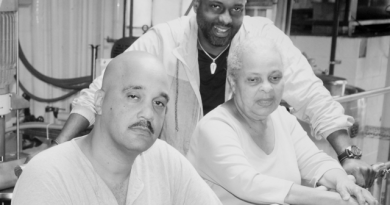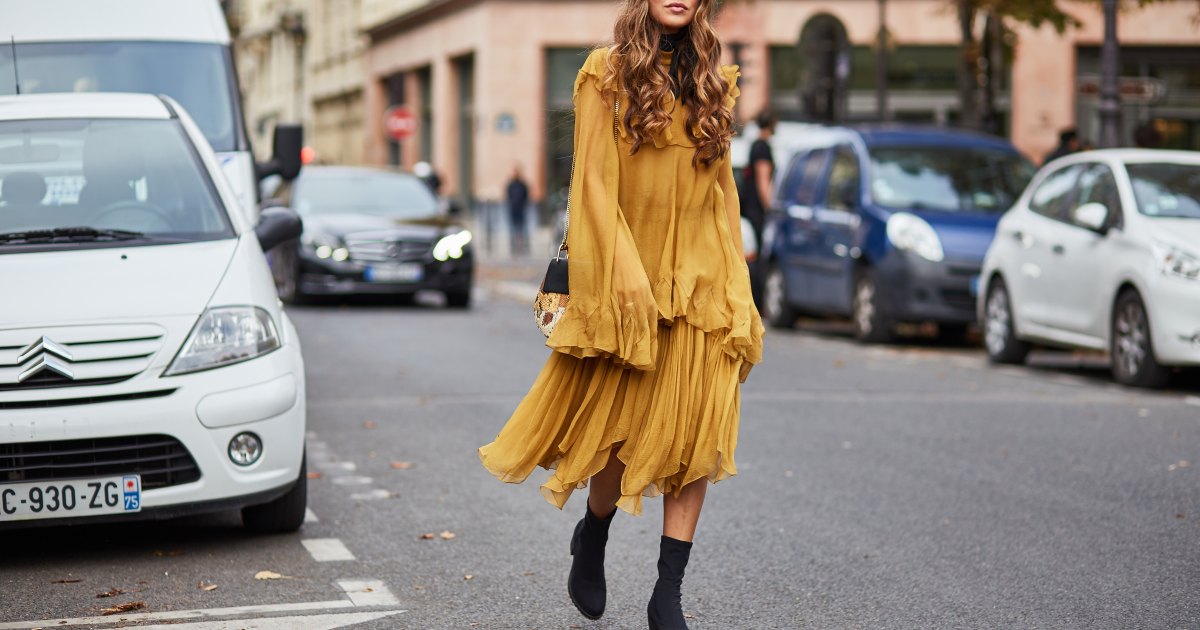A New Era for China’s $15 Billion Streetwear Market
Shanghai-based influencer Yuwei “Yuyu” Zhangzou has built a 3.5 million-strong following showcasing her signature style of oversized hoodies, T-shirts and impressive collection of more than 100 pairs of sneakers.
She counts among a cohort of Chinese sneakerheads and hypebeasts who have helped propel streetwear into the mainstream. The category is now a $15 billion market in China, according to investment bank Citic Securities.
But as the market for streetwear grows and evolves, so too do consumer expectations and the competitive landscape. That’s creating new pressures and opportunities for brands looking to tap into the massive Chinese market.
“Feeding the hype machine is no longer enough, consumers are looking for purpose in their consumption,” said Adela Tan, Asia Pacific vice president and managing director at Williamson-Dickie. The group’s traditional workwear brand, Dickies, has been embraced by streetwear aficionados in the West, but also more recently in China. That’s partly due to changes in the way young consumers think about brands and products, Tan said. China’s Gen-Z consumers are looking for “a style that is perceived to be cool, understated, authentic and approachable,” she added.
A Growing Market
Streetwear made its way over to China via hip-hop-influenced K-Pop, and its trajectory has followed a similar path to Western markets; it’s moved from subculture to the mainstream, boosted by its influence on luxury and a wider shift to more casual and gender-neutral styles.
That shift has driven rapid growth: between 2015 and 2020, the amount Chinese consumers spent on streetwear grew four times more than the amount spent on apparel outside the category, according to a study by market researcher Nielsen and Chinese e-commerce platform OFashion.
“The market is totally different now,” said Chris Wang, founder and chief executive of Chinese streetwear media platform Nowre. As a leading figure in the local streetwear scene for the last decade, Wang has seen the sector grow from a tiny subculture to a broad church that encompasses men, women, high- and lower-tier cities, streetwear, sportswear and luxury brands alike.
“A lot of young kids are looking for the new thing … they want to show their friends they have taste and style,” he added.
It’s more about comfort, cool and the high-end aspect.
The streetwear influence on the luxury sector has been particularly influential in bringing more Chinese women into the scene, Zhangzou says. She is well known for working with numerous luxury brands, including Louis Vuitton and Dior. Aside from Nike (Zhangzou is a collector of Air Force 1 sneakers), the streetwear pieces she most often buys are from luxury brands, including Louis Vuitton, Balenciaga and Celine, she said.
“For women [in particular] I think it’s more about comfort, cool and the high-end aspect. The base is very comfy, but you can also be a very fancy, fashionable, streetwear girl,” she said, adding that almost everyone she knows, even those who would never consider themselves part of any streetwear “scene” in China, are buying more hoodies and more sneakers.
“Those are products you just need to have in your wardrobe these days,” she added.
In a sign of streetwear’s growing clout in the broader Chinese market, social media platform Xiaohongshu is sponsoring streetwear fair Innersect’s January edition. Content related to streetwear on its platform has jumped this year; the average daily number of posts related to “streetwear” was up 689 percent between January and October 2020 compared to the same period in 2020, Xiaohongshu data show.
Beyond the Hype Machine
But as streetwear becomes more mainstream, brands are having to work harder to cut through the noise.
There was a time, only a few years ago, when the release of limited-edition sneakers at streetwear fair Innersect would lead local hypebeasts and scalpers to fist fights over the best products, but “now the hype engine is really cooling down,” said David Tang, Innersect’s brand director.
Instead, a more discerning consumer is looking for brands that really speak to them, and that’s opening up opportunities for new players, Tang added. “Our VIP clients are shifting their attention to the smaller brands, to the emerging brands. Our consumers give us the confidence to bring something relatively unknown to the market now,” he said.
Now the hype engine is really cooling down.
Innersect, a three-day festival first held in Shanghai in 2017 and co-founded by celebrity-turned-streetwear maven Edison Chen (the same group that operates Innersect also has its own streetwear brand, Clot, and a network of multi-brand retail stores around China called Juice), is looking to lead its audience into a world of elevated streetwear.
As part of that effort, the group is looking to evolve its offering to reach a wider community. For the fair’s next edition, which has been postponed from December to mid-January due to tightened Covid-19 restrictions in China, Innersect has named Fear of God founder Jerry Lorenzo artistic director. The idea is to broaden the fair’s reach into art and culture while introducing and building the clout of brands that are less established in China. Lorenzo will curate artworks that will be part of a standalone gallery within the fair called “Neighbourhood.”
“Innersect exists to give the bigger picture,” Tang said. “We want to champion this combination of streetwear and art … [but we also] want to establish ourselves as a connector from East to West. That’s the bigger vision.”
:quality(70)/cloudfront-eu-central-1.images.arcpublishing.com/businessoffashion/GPYWJ3RV4BACNPMEWI3R6RPQ5I.jpg)
Shifting Fortunes
While Chinese consumers have embraced streetwear codes, they have cooled on some big players in the category.
Adidas and Nike were among the brands ensnared in controversy this year, after announcing they would not source cotton from China’s Xinjiang region as a result of allegations of forced labour that have led to international sanctions. In China — where the government has denied the use of forced labour — many see the stance against Xinjiang cotton as anti-Chinese, a view stoked by Chinese officials and echoed by influential celebrities.
Both Nike and Adidas, among many other international players, lost Chinese celebrity spokespeople as a result of the controversy, limiting their ability to drive online conversation and traffic on Chinese platforms, many of which lean heavily on celebrity content.
“Those brands have been relatively quiet in China this year, [and] that has been another factor cooling down the hype engine,” Tang said.
That change has also helped boost domestic brands, which have surged on local resale sites.
For instance, prices of Li Ning’s Way of Wade sneakers, a collaboration between the local sportswear giant and NBA star Dwyane Wade, spiked on resale platform Dewu in April, just after the controversy first hit. At the time the shoes were selling for as much as 48,889 yuan ($7,464), a 31-fold increase on the original price of 1,499 yuan. The site, which is known as Poizon in English and is the platform most closely associated with streetwear in China, removed dozens of pairs until the speculation cooled. The frenzy represented a level of hype previously reserved for international brand collaborations, Tang said.
Smaller players have also emerged. Shenzhen-based Roaring Wild started selling on Taobao in 2010, but now has been tapped to show its collections as part of Shanghai Fashion Week; Beijing’s SMFK is stocked in prestigious local department store Lane Crawford; and over the summer, Equalizer, a Chinese brand with roots in basketball culture, saw its shower slides go viral on Chinese social media.
“There are so many choices. In the last five years a lot of new Chinese brands have come up,” Wang said.
Many brands are now looking to China’s e-commerce and social media platforms to help navigate consumers’ rapidly changing tastes by leveraging their data on trends and products that are on the rise. This year, Dickies developed a new baseball jacket based on market data provided by Tmall. The item generated sales of more than $1 million over the Singles Day sales period alone, Tan said.
Innersect plans to use a new partnership with Xiaohongshu to mine data that will help it identify up-and-coming brands to include in its future fairs and stock in its Juice retail stores.
“The streetwear sector is moving fast and you have to adapt quickly to survive,” Tang said. “If we can make it work it will really be a game-changer for the industry.”
时尚与美容
FASHION & BEAUTY
:quality(70)/cloudfront-eu-central-1.images.arcpublishing.com/businessoffashion/GIAVBXYJSFC2ZDCVZW3SPY3ML4.jpg)
Chinese Beauty Retailer Harmay Acquires Kevyn Aucoin Brand
Harmay acquired Kevyn Aucoin from investment firm Manzanita Capital, which has owned the makeup brand since 2015. No details of the deal were provided. Kevyn Aucoin exited the Chinese market in 2020 and it is believed Harmay will use its retail network to drive fresh expansion in the country. (BoF)
‘Chinese Zara’ Fights to Survive as Creditors Circle
La Chapelle has said it will fight petitions filed by creditors to a Shanghai court seeking the retailer’s liquidation. The troubled fast fashion chain once boasted thousands of stores around China and was nicknamed the “Zara of China,” but is facing pressure for failing to repay millions in debt, according to court filings. (Caixin Global)
科技与创新
TECH & INNOVATION
:quality(70)/cloudfront-eu-central-1.images.arcpublishing.com/businessoffashion/LYHLQC5MRBDHHMOFIN5CF3BAKQ.jpg)
China Fines Top Livestreamers for Tax Evasion
China’s tax authorities fined Zhu Chenhui, who uses the screen name Xueli Cherie, 66 million yuan ($10.34 million). Meanwhile, Lin Shanshan, who also goes by Lin Shanshan Sunny, was fined 28 million yuan ($4.38 million). This move follows fines levied on several Chinese celebrities for tax evasion. It reflects growing regulatory appetite to clean up online “fan” culture. (BoF)
China Circulates New Rules for Celebrities Promoting Brands, Products Online
According to a release published by the Office of the Central Cyberspace Affairs Commission, content involving celebrities that endorses “products, services, brands or for-profit events” must now be clearly marked as advertisements when appearing on any online platform. Previously, celebrity endorsements have lived in a more ambiguous space, not always prominently labelled as advertising. (BoF)
消费与零售
CONSUMER & RETAIL
:quality(70)/cloudfront-eu-central-1.images.arcpublishing.com/businessoffashion/R4E6VAHW7REA5P6F7FAXXVMDWU.jpg)
China’s Luxury Resale Market Tipped to Reach $33 Billion by 2025
China’s domestic luxury resale market was valued at 51 billion yuan ($8 billion) in 2020 and is expected to grow at a compound annual growth rate of nearly 33 percent to hit more than 208 billion yuan ($32.75 billion) by 2025, according to a new report released by China internet industry researcher, iResearch. (BoF)
政治,经济与社会
POLITICS, ECONOMY, SOCIETY
:quality(70)/cloudfront-eu-central-1.images.arcpublishing.com/businessoffashion/SRGXXFYW2ZEFBATPBODM45PGNE.jpg)
JPMorgan Chase CEO Causes Controversy with China Remarks
Jamie Dimon issued two separate apologies after joking during a speech that his organisation would likely outlast the Chinese Communist Party (both are celebrating their 100th anniversaries this year). “I regret and should not have made that comment,” Dimon said in his first apology statement. “I was trying to emphasise the strength and longevity of our company.” (The New York Times)
China Decoded wants to hear from you. Send tips, suggestions, complaints and compliments to our Shanghai-based Asia Correspondent [email protected].

:quality(70)/cloudfront-eu-central-1.images.arcpublishing.com/businessoffashion/HLNMPGYXHJGDXELR3UDZROPDIQ.jpg)

:quality(70)/cloudfront-eu-central-1.images.arcpublishing.com/businessoffashion/CQLODQ7THBB53GCT5IGN7UZCPI.jpg)

